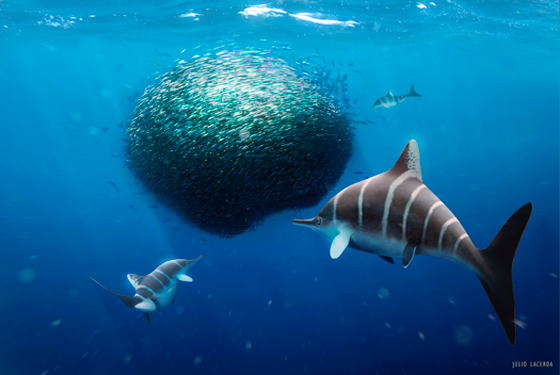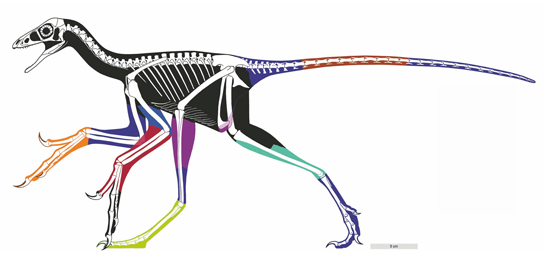Time to catch up on this year’s dinosaur discoveries. For instance, a new species of North African carcharodontosaurid was described recently. The fragmentary fossil material representing Tameryraptor markgrafi was excavated during the expedition to Egypt led by the famous German palaeontologist Ernst Stromer von Reichenbach. The naming of this new dinosaur (Kellermann, Cuesta and Rauhut), demonstrates that the theropods of the Bahariya Oasis and the Moroccan Kem Kem Group are not as closely related as previously thought. Researchers have stated that the proposed faunal similarities between these two strata need further examination.
Tameryraptor markgrafi
The partial skeleton from the Egyptian Bahariya Oasis, found in April 1914, consisted of elements from the skull, a partial dorsal vertebra, upper limb ones, the proximal end of the pubis and part of a caudal vertebra. It was described by Stromer in 1931. The material was first assigned to the species Megalosaurus saharicus, which had been described from isolated teeth found in geologically older rocks in Algeria. Unfortunately, almost all of the material from the Bahariya Oasis, including these fossils was destroyed during a bombing raid in World War II.
A detailed reassessment of the available information on the Egyptian carcharodontosaurid, including a previously undescribed photograph of the exhibited specimen, revealed that it differed from the Moroccan Carcharodontosaurus saharicus in several ways. It also possessed a horn-like rugosity on the nasal bone. These unique characteristics permitted the research team to confidently reassign these fossils, removing them from the C. saharicus taxon and allowing the naming of a new species of North African theropod.

A photograph of the holotype fossil material (SNSB-BSPG 1922 X46) on display. This photograph was taken prior to April 1944. Picture credit: Kellermann et al.
Picture credit: Kellermann et al
The fossils were discovered around two kilometres from Ain Gedid on the Western foot of the Gebel Harra in basal layers of hardened, gypsum-free marl. The fossil material it thought to be around ninety-five million years old (Cenomanian faunal stage of the Late Cretaceous).
Based on the photographic evidence and a single endocast of the skull that remains, palaeontologists have estimated that Tameryraptor was around ten metres long.

An illustration of the large carcharodontosaurid from the Bahariya Formation (Egypt). It has been named Tameryraptor markgrafi. Picture credit: Everything Dinosaur.
Picture credit: Everything Dinosaur
The Etymology of Tameryraptor
The genus name is derived from one of the more informal names for Egypt (ta-mery), which means beloved land and the Latin word for thief (raptor). The species name honours Austrian fossil collector Richard Markgraf, who discovered most of the dinosaur remains described by Ernst Stromer von Reichenbach.
The scientific paper: “Re-evaluation of the Bahariya Formation carcharodontosaurid (Dinosauria: Theropoda) and its implications for allosauroid phylogeny” by Maximillian Kellerman, Elena Cuesta and Oliver W. M. Rauhut published in PLOS One.
The award-winning Everything Dinosaur website: Dinosaur and Prehistoric Animal Models.




Leave A Comment